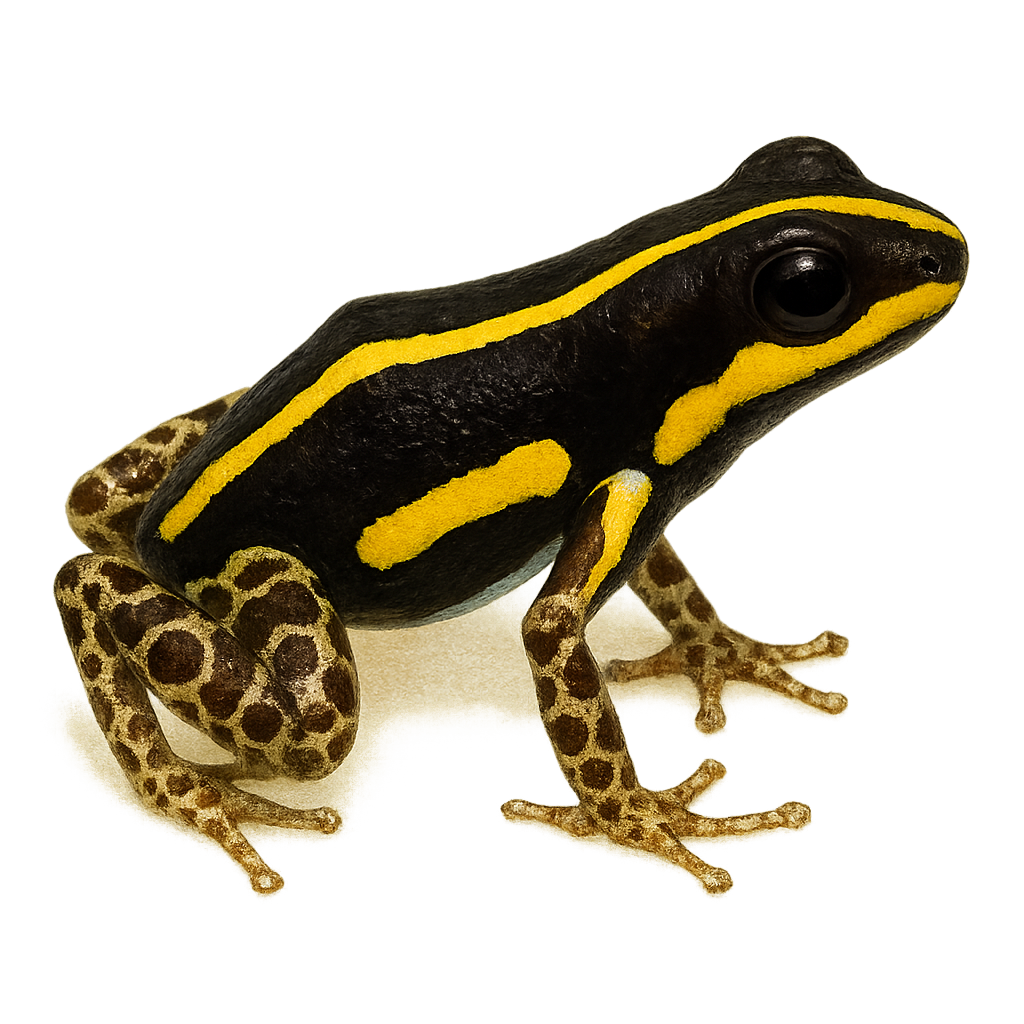Your wildlife photography guide.
Explore the yellow-striped poison frog in detail, study its behavior, prepare your shots.
Where to observe and photograph the yellow-striped poison frog in the wild
Learn where and when to spot the yellow-striped poison frog in the wild, how to identify the species based on distinctive features, and what natural environments it inhabits. The WildlifePhotographer app offers tailored photography tips that reflect the yellow-striped poison frog’s behavior, helping you capture better wildlife images. Explore the full species profile for key information including description, habitat, active periods, and approach techniques.
Yellow-striped Poison Frog
Scientific name: Ranitomeya flavovittata

IUCN Status: Least Concern
Family: DENDROBATIDAE
Group: Amphibians
Sensitivity to human approach: Suspicious
Minimum approach distance: 2 m
Reproduction period: November to March
Incubation: 12–14 jours
Births: December to April
Habitat:
Tropical rainforests, riparian zones
Activity period :
Primarily active during the day, with peak activity in the morning and late afternoon.
Identification and description:
Ranitomeya flavovittata is a small, brightly colored frog native to the rainforests of South America, primarily in Peru. It is known for its distinctive yellow stripes on a black background, making it easily recognizable. This species belongs to the Dendrobatidae family, known for its poisonous frogs. Although modest in size, typically between 1.5 and 2 cm, it plays a crucial role in the ecosystem as an insect predator. It prefers humid habitats, often near water bodies, and is primarily active during the day. Its skin secretes toxic alkaloids, an effective defense against predators. However, in captivity, it loses this toxicity due to the absence of its natural diet.
Recommended lens:
Macro – adjust based on distance, desired framing (portrait or habitat), and approach conditions.
Photography tips:
To photograph Ranitomeya flavovittata, it is essential to approach slowly and remain discreet to avoid scaring it. Use a macro lens to capture the details of its colorful patterns. Natural light is ideal, but a diffused flash can be used to reveal the bright colors without creating unwanted reflections. Be patient and wait for the frog to settle on a leaf or branch to get a natural background. Avoid handling the frog to prevent disturbing its natural behavior.
The WildlifePhotographer App is coming soon!
Be the first to explore the best nature spots, track rutting seasons, log your observations, and observe more wildlife.
Already 1 432 wildlife lovers subscribed worldwide

